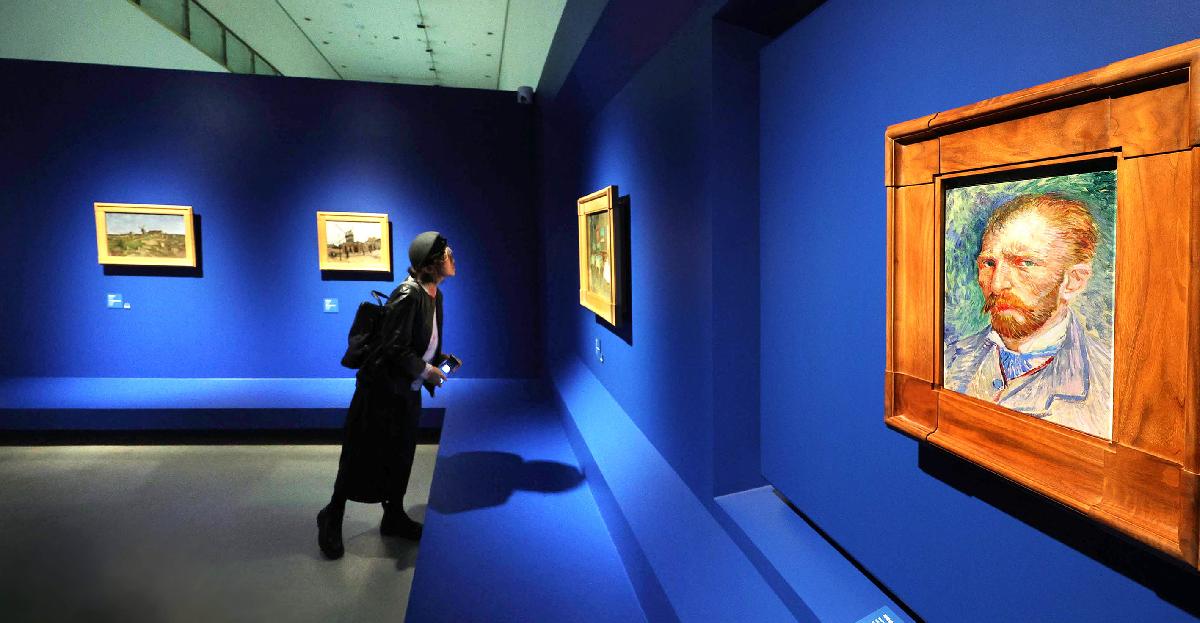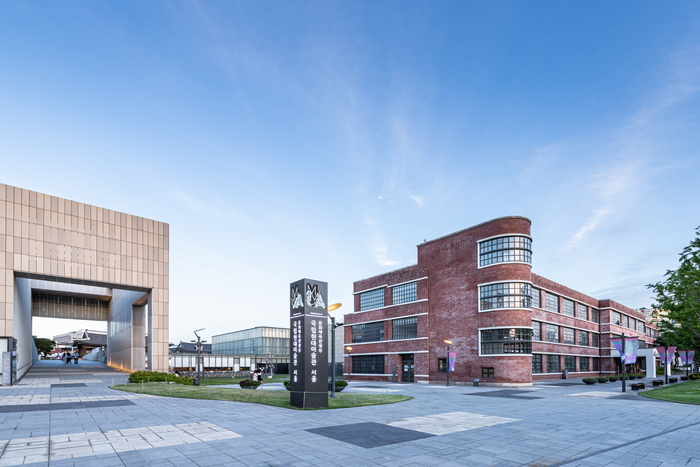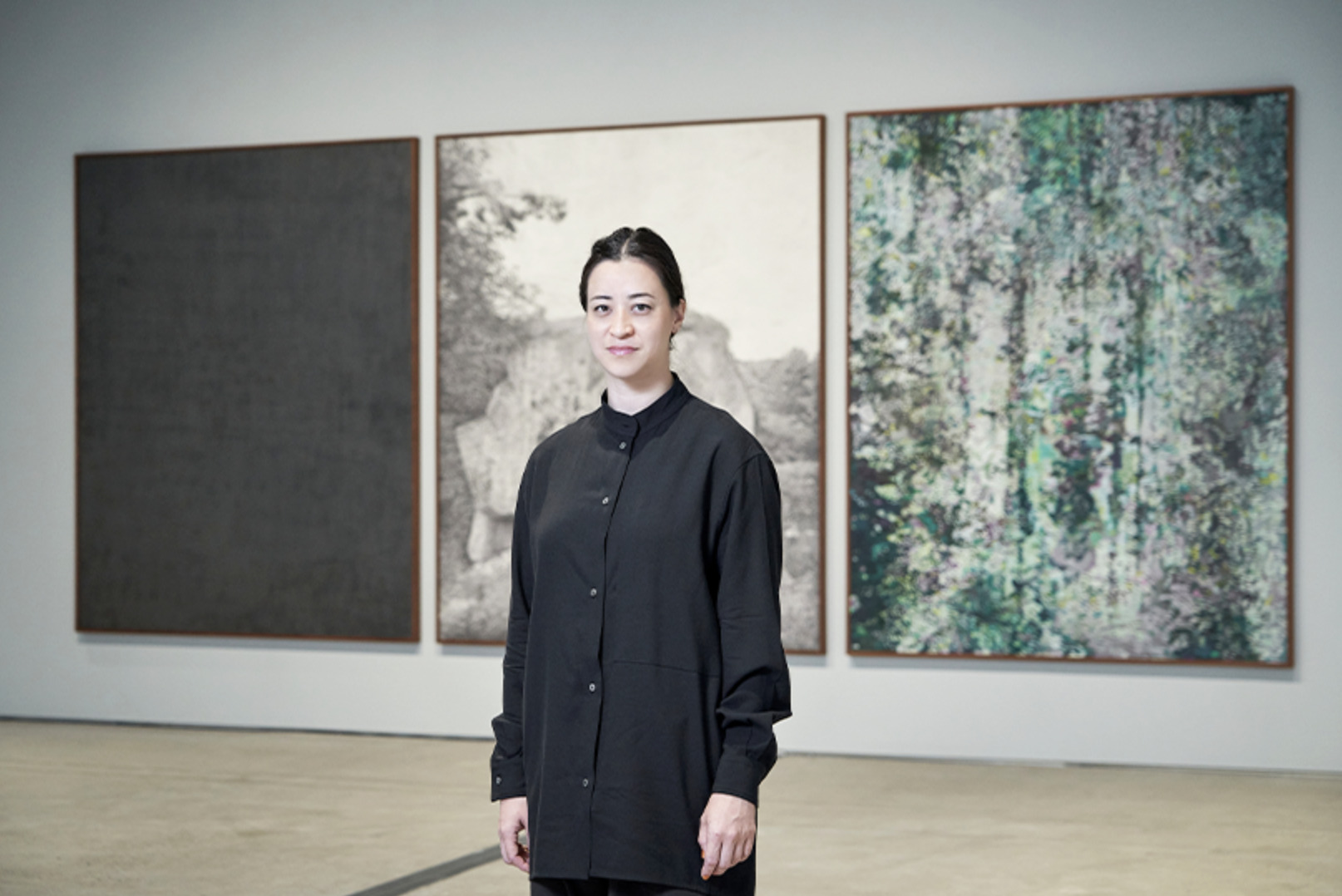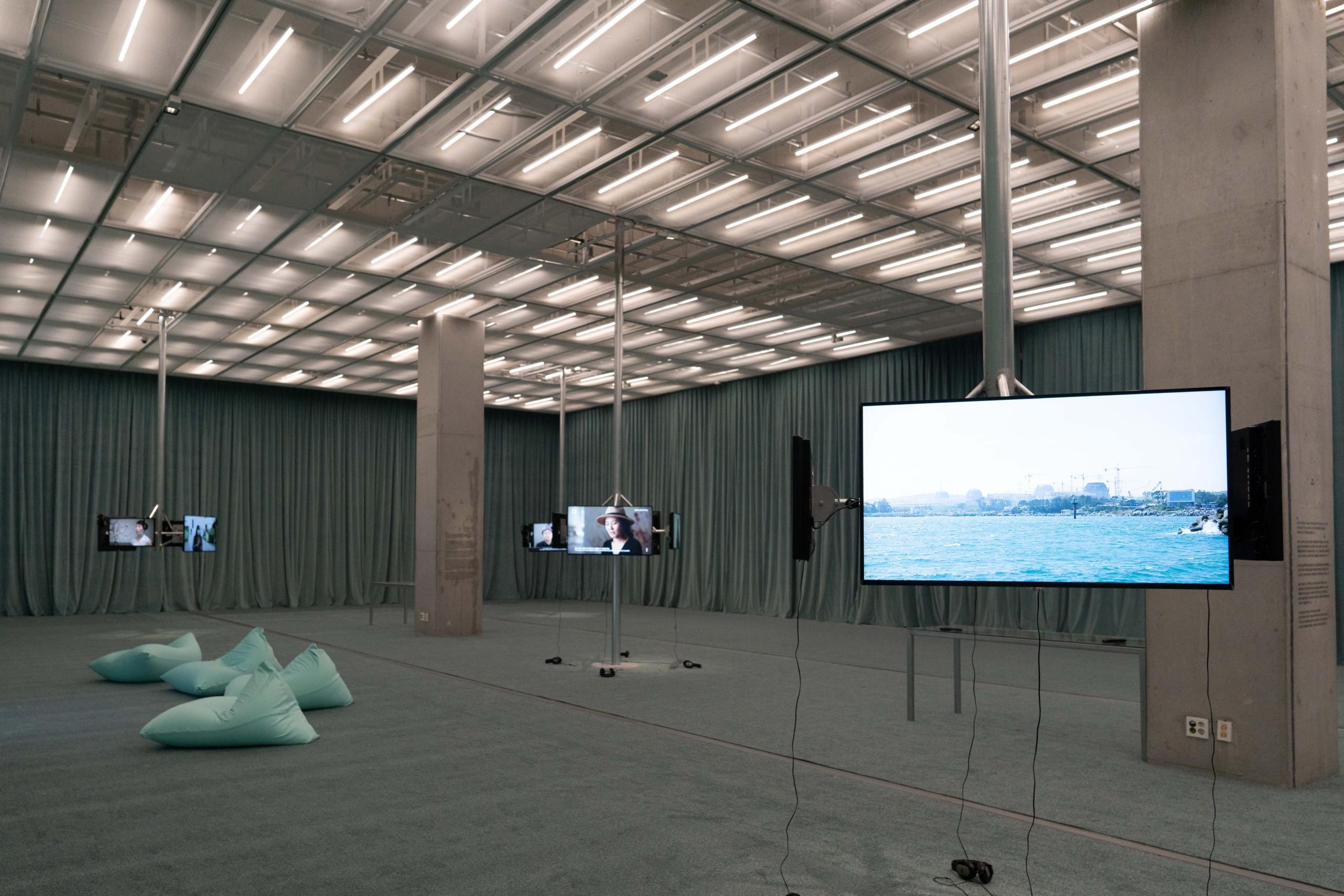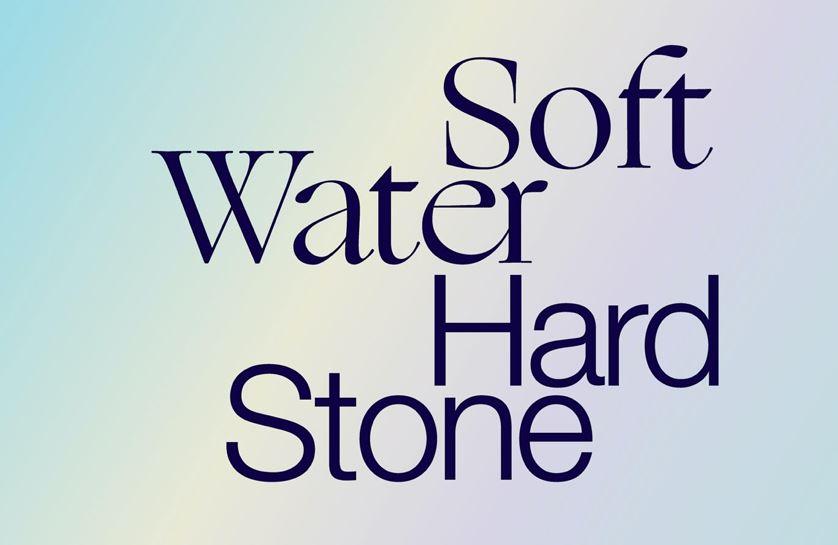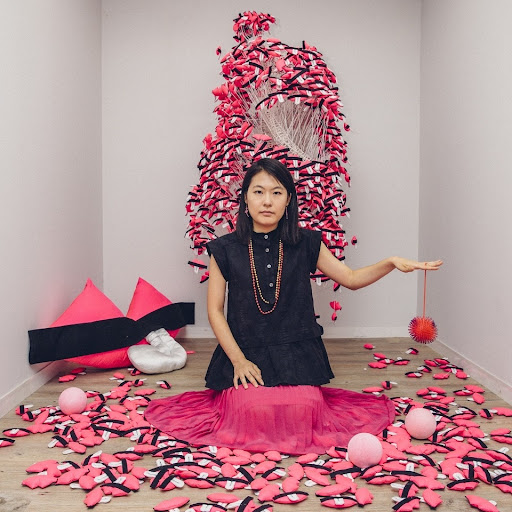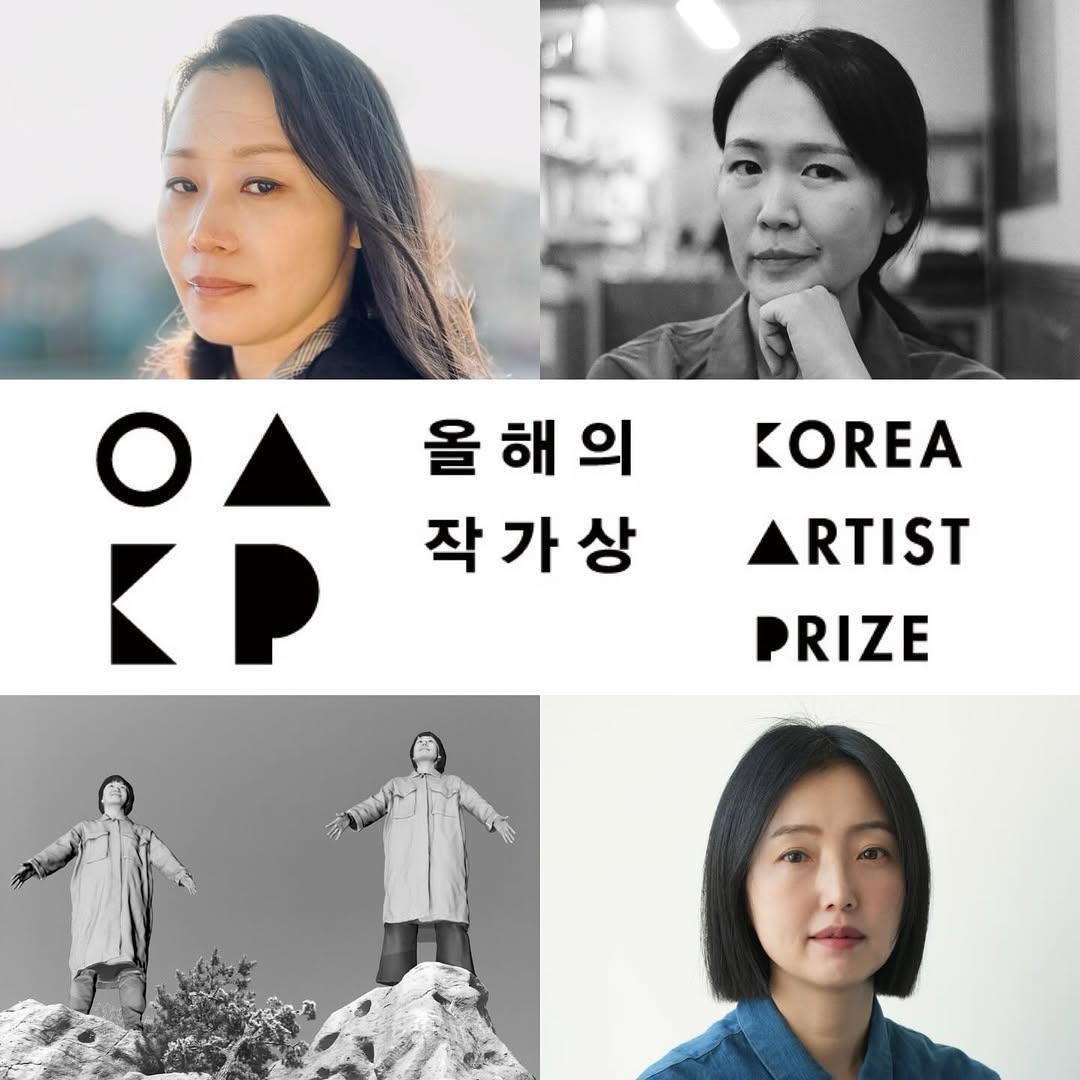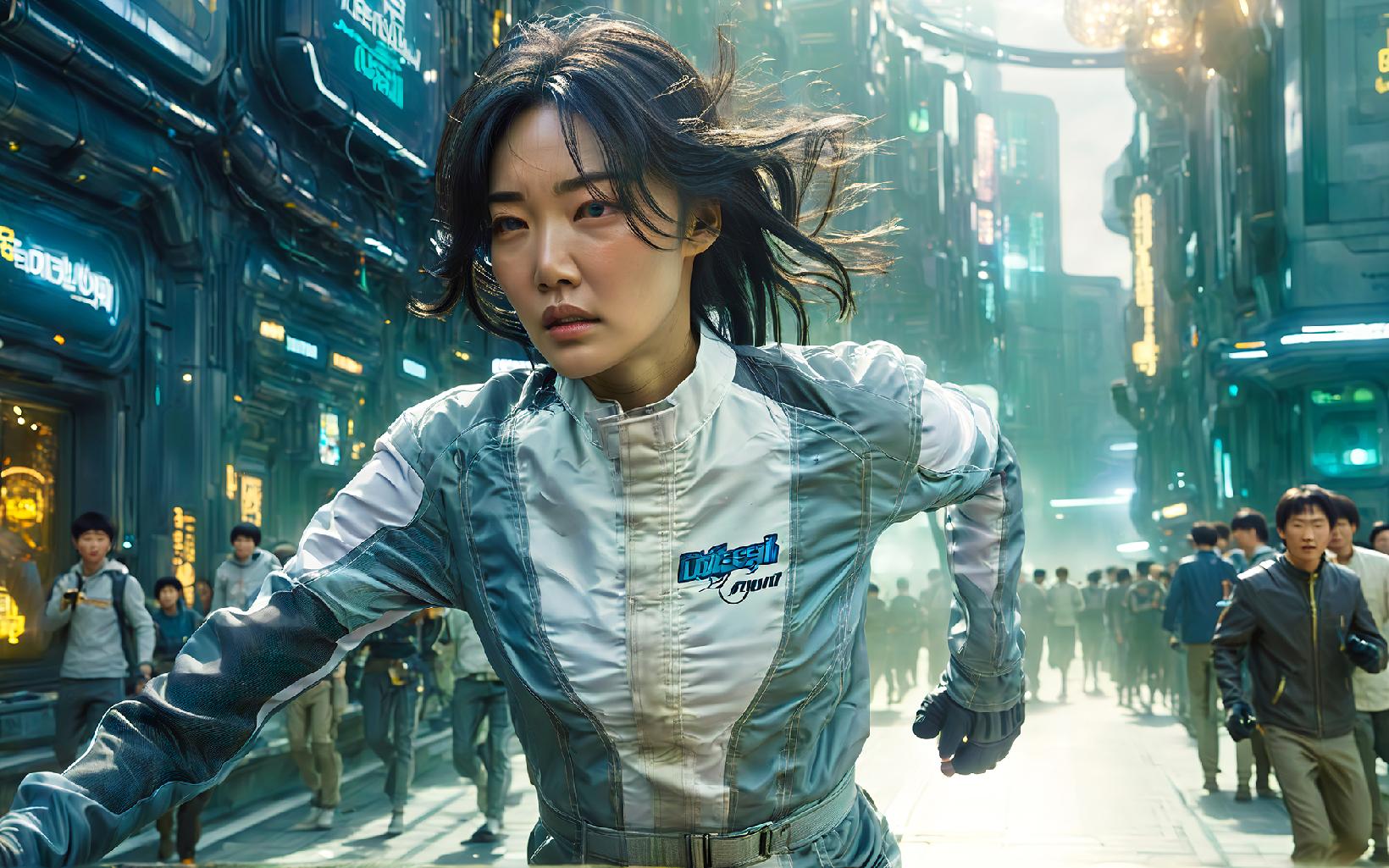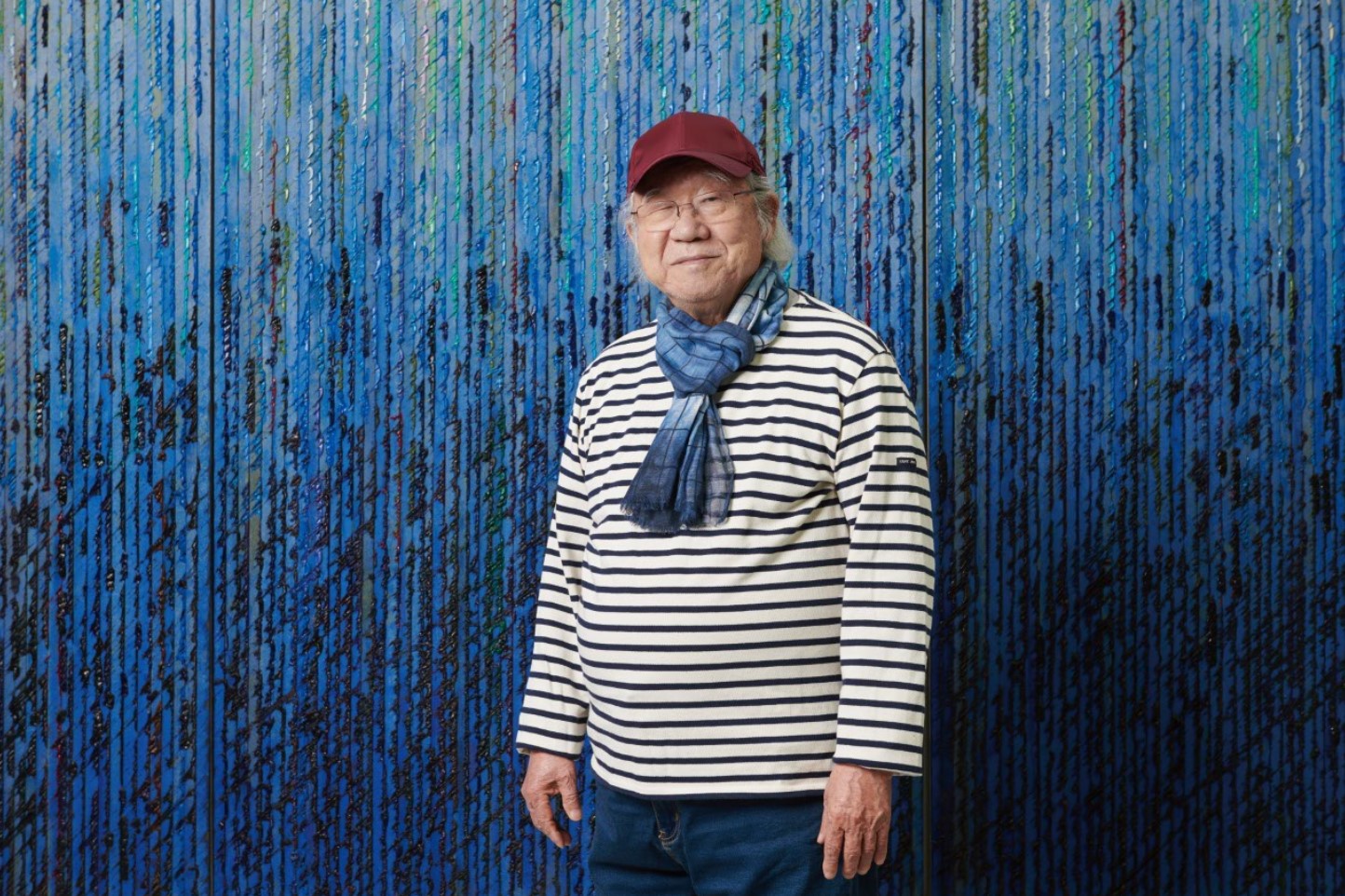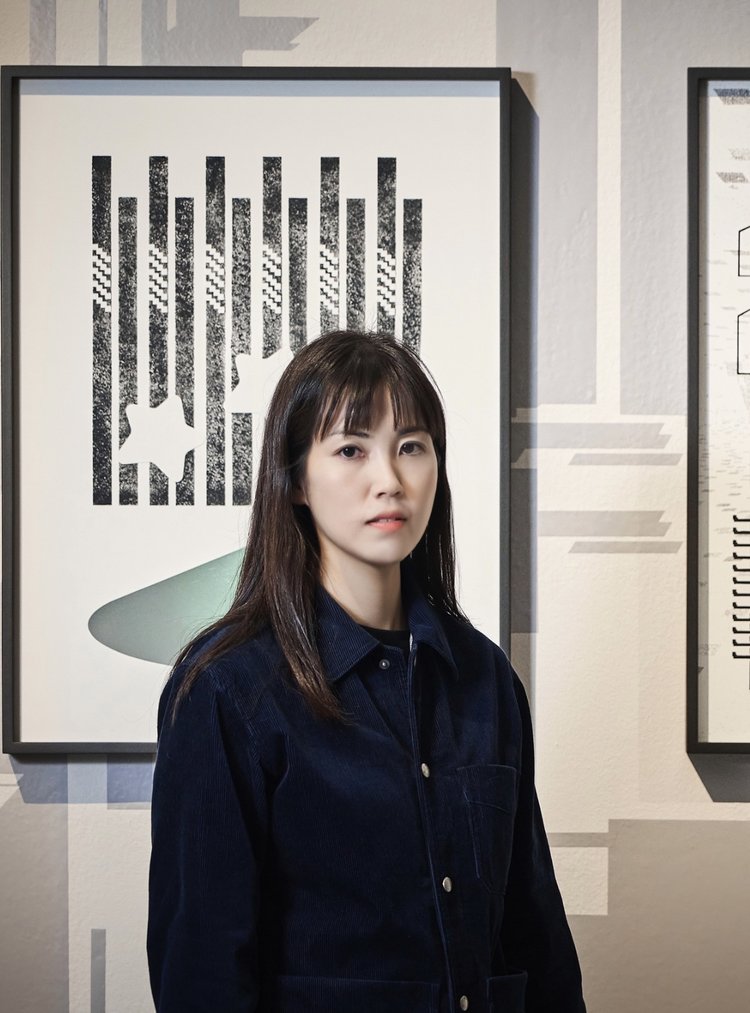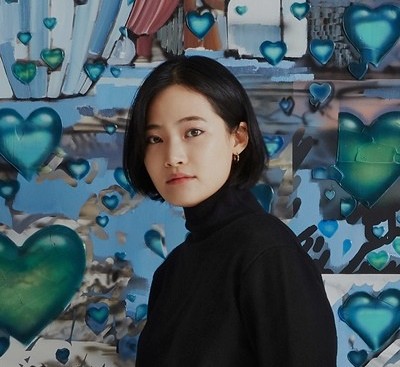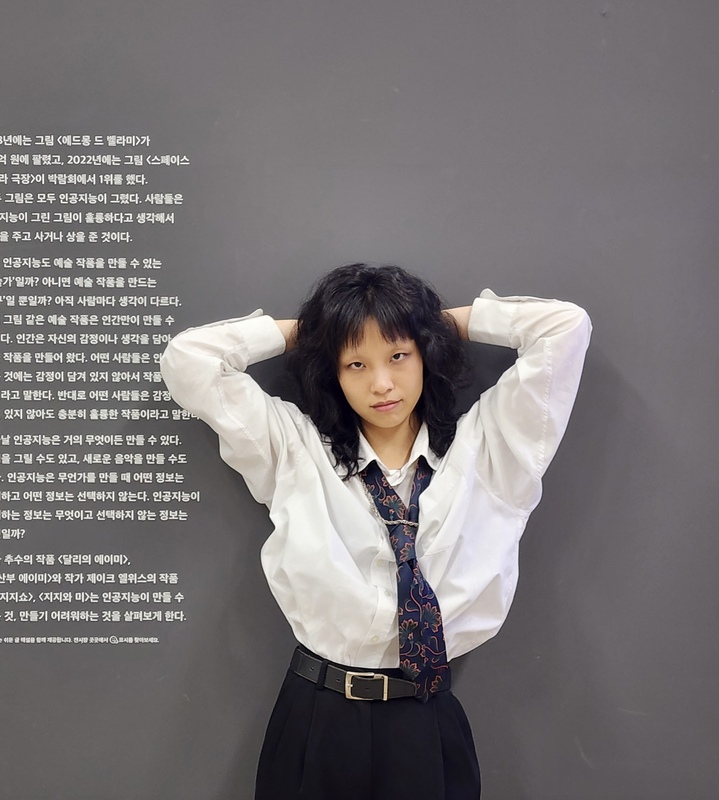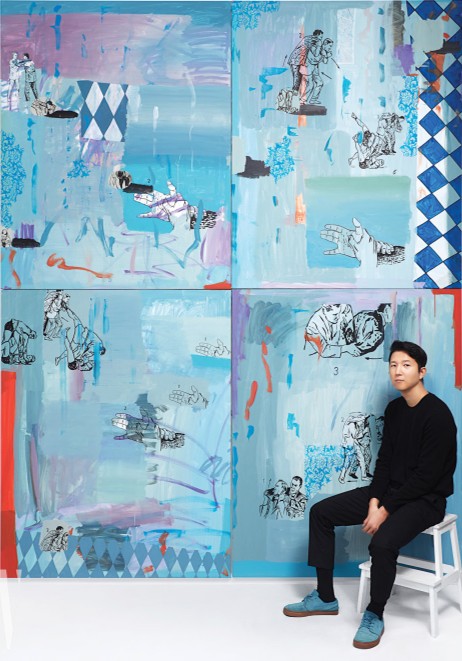Korean-Colombian artist Gala Porras-Kim (b. 1984) has been interested in how traces of past civilizations are defined and reinterpreted within contemporary contexts. Her work examines the multilayered narratives of both tangible relics housed in institutional spaces such as museums and galleries and intangible heritage like sound, language, and history.
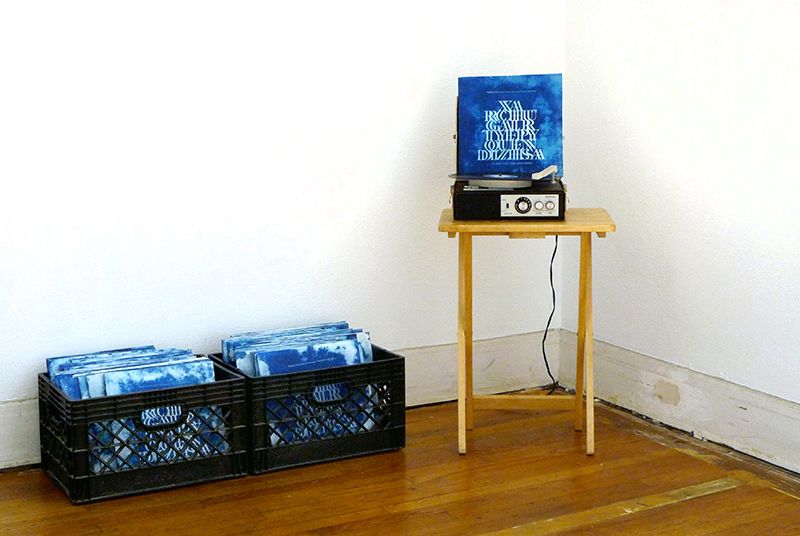 Gala Porras-Kim, Whistling
and Language Transfiguration, 2012 ©Commonwealth and Council
Gala Porras-Kim, Whistling
and Language Transfiguration, 2012 ©Commonwealth and CouncilGala Porras-Kim’s early work, Whistling
and Language Transfiguration (2012), involves a sound piece produced
as a vinyl record that translates the tonal Zapotec language, spoken by the
Zapotec Indigenous people of Mexico, into whistles. The Zapotec language, used
as a strategy of resistance against Spanish colonizers since the 16th century,
mimicked words through tonal whistling, disguising conversations as music.
Porras-Kim imitated and recorded the
endangered Zapotec language, which has survived solely through oral
transmission, using her own whistling and further encoded the sounds as musical
notation. Her exploration of a vanishing language questions how we can approach
unreadable or inaccessible languages—information that eludes our full
understanding.
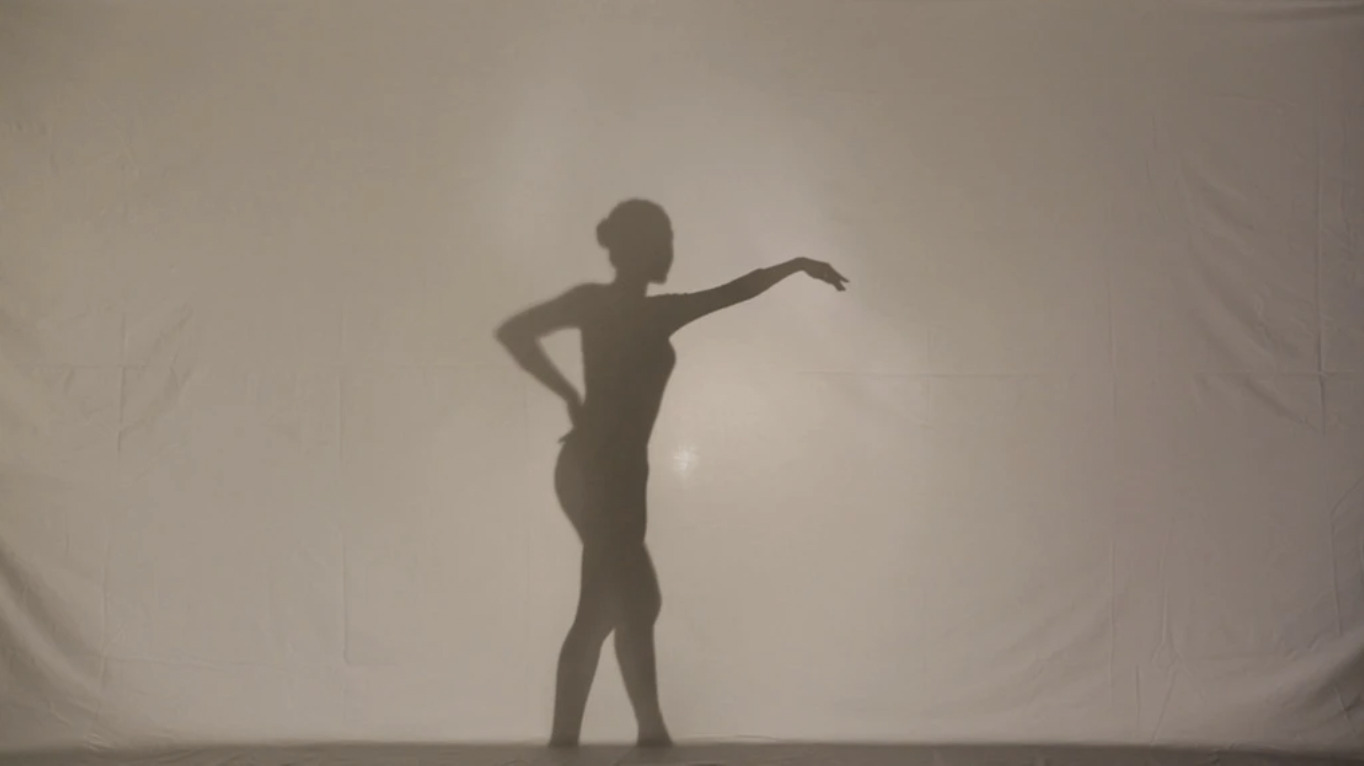 Gala
Porras-Kim, Muscle Memory, 2017 ©Gala Porras-Kim
Gala
Porras-Kim, Muscle Memory, 2017 ©Gala Porras-KimCreated
in 2017, Muscle Memory (2017) is a video work that records
the silhouette of a dancer attempting Korean traditional dance without access
to definitive documentation. Traditional dances, transmitted through bodily
practices rather than written records, inherently carry an ontological
vulnerability, as they are nearly impossible to preserve and pass down in a
perfectly identical state.
The
dancer's movements, shaped by their unique physique, anatomical structure, and
interpretation of choreography, become a vessel for preserving and containing
individualized knowledge through muscle memory. The video, focusing solely on
the dancer's silhouette, highlights the body and muscles as vessels that
encapsulate the intangible cultural heritage of dance.
These
works aim to document intangible cultural legacies handed down through
collective history, translating them into the artist's unique visual language
and resisting frameworks rooted in Western modernity.
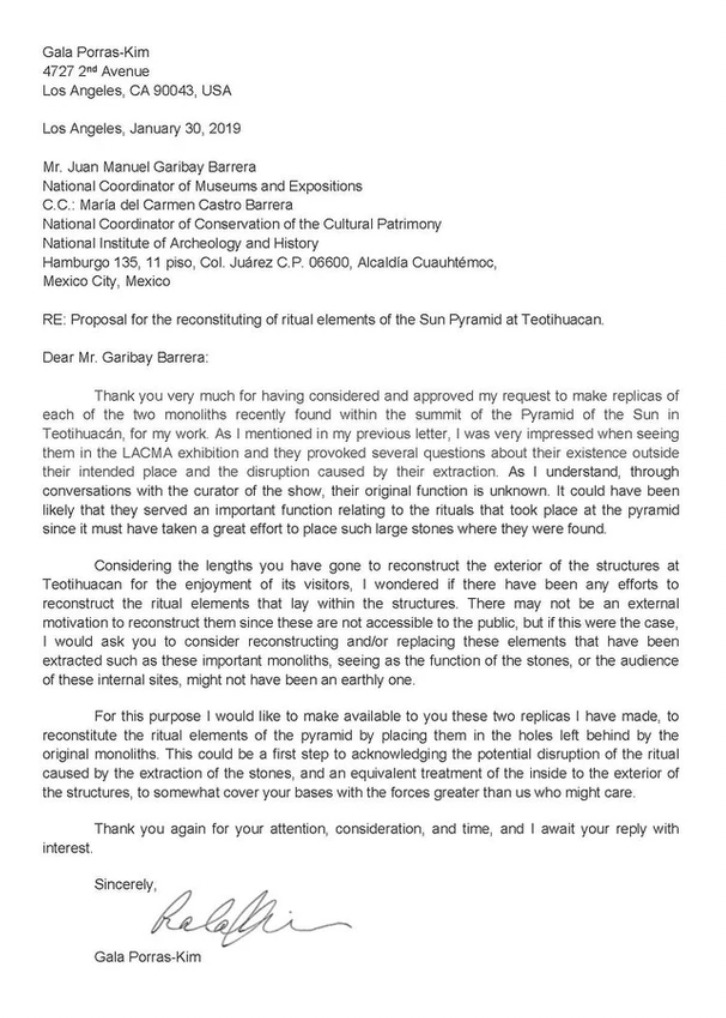 Gala
Porras-Kim, Proposal For The Reconstituting Of Ritual Elements For The
Sun Pyramid At Teotihuacan, 2019 ©Gala Porras-Kim
Gala
Porras-Kim, Proposal For The Reconstituting Of Ritual Elements For The
Sun Pyramid At Teotihuacan, 2019 ©Gala Porras-KimGala Porras-Kim has also shown a deep
interest in artifacts unearthed from ancient sites such as the Mayan
civilization, Egypt, and dolmens, which lose their original context when
excavated and relocated to museums for display or preservation. Artifacts forcibly
displaced under the pretext of research and conservation often find themselves
encased in the artificially frozen time of museum glass cases or stripped of
their status as artifacts altogether.
The artist examines the complex lives of
these objects, which have lost their original functions and places, and
questions the institutional practices and policies shaped under the pretext of
preserving culture and history. In doing so, Porras-Kim engages in concrete
practices by collaborating directly with holding institutions or research
centers to explore the regulations and laws surrounding these artifacts.
For instance, her 2019 work,
Proposal for the Reconstituting of Ritual Elements for the Sun Pyramid
at Teotihuacan, exemplifies a multidisciplinary artistic approach to
two massive stones that once stood atop the Sun Pyramid at the archaeological
site of Teotihuacan, Mexico.
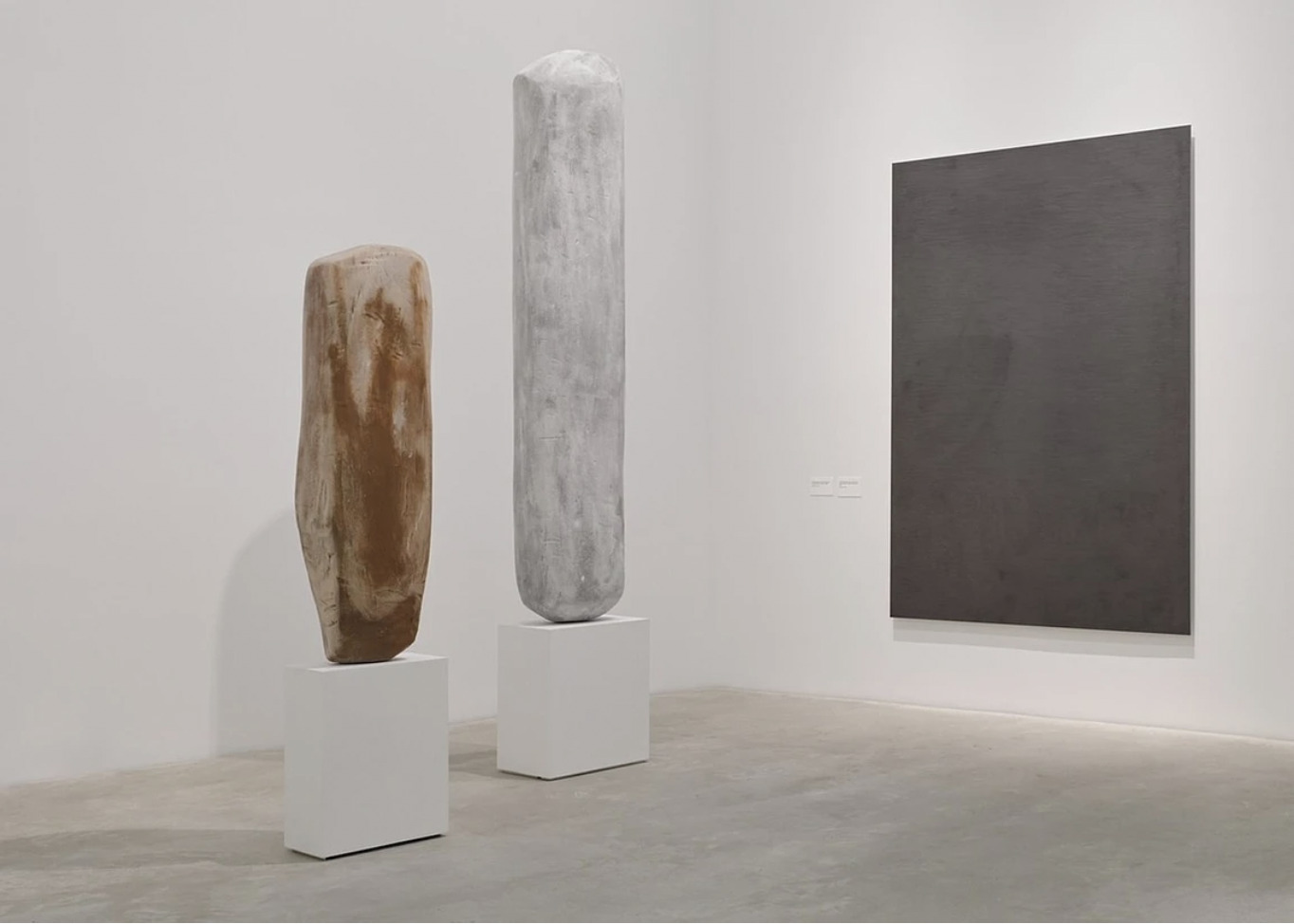 Gala
Porras-Kim, Proposal For The Reconstituting Of Ritual Elements For The
Sun Pyramid At Teotihuacan, 2019 ©Gala Porras-Kim
Gala
Porras-Kim, Proposal For The Reconstituting Of Ritual Elements For The
Sun Pyramid At Teotihuacan, 2019 ©Gala Porras-KimThe
two massive stones, presumed to have been used for ritualistic purposes, are
now housed in a museum, leaving only two empty pits at the top of the pyramid
where they once stood. With permission from the research institute, Porras-Kim
created replicas of the stones and submitted a formal proposal to the
institute. In her proposal, the artist emphasized the need to revive the
ritualistic significance embedded in these structures and suggested placing her
replicas at the original locations of the stones atop the pyramid.
Accompanying
this project is the monochromatic painting Two Plain Stelas in the
Looter Pit at the Top of the Sun Pyramid at Teotihuacan (2019), a
black graphite rendering of the dark night sky as seen from within the Sun
Pyramid. Through repeated, meticulous pencil strokes, the work poetically
evokes the cosmological significance of the Sun Pyramid, a sacred site for the
Teotihuacanos who worshipped the sun deity.
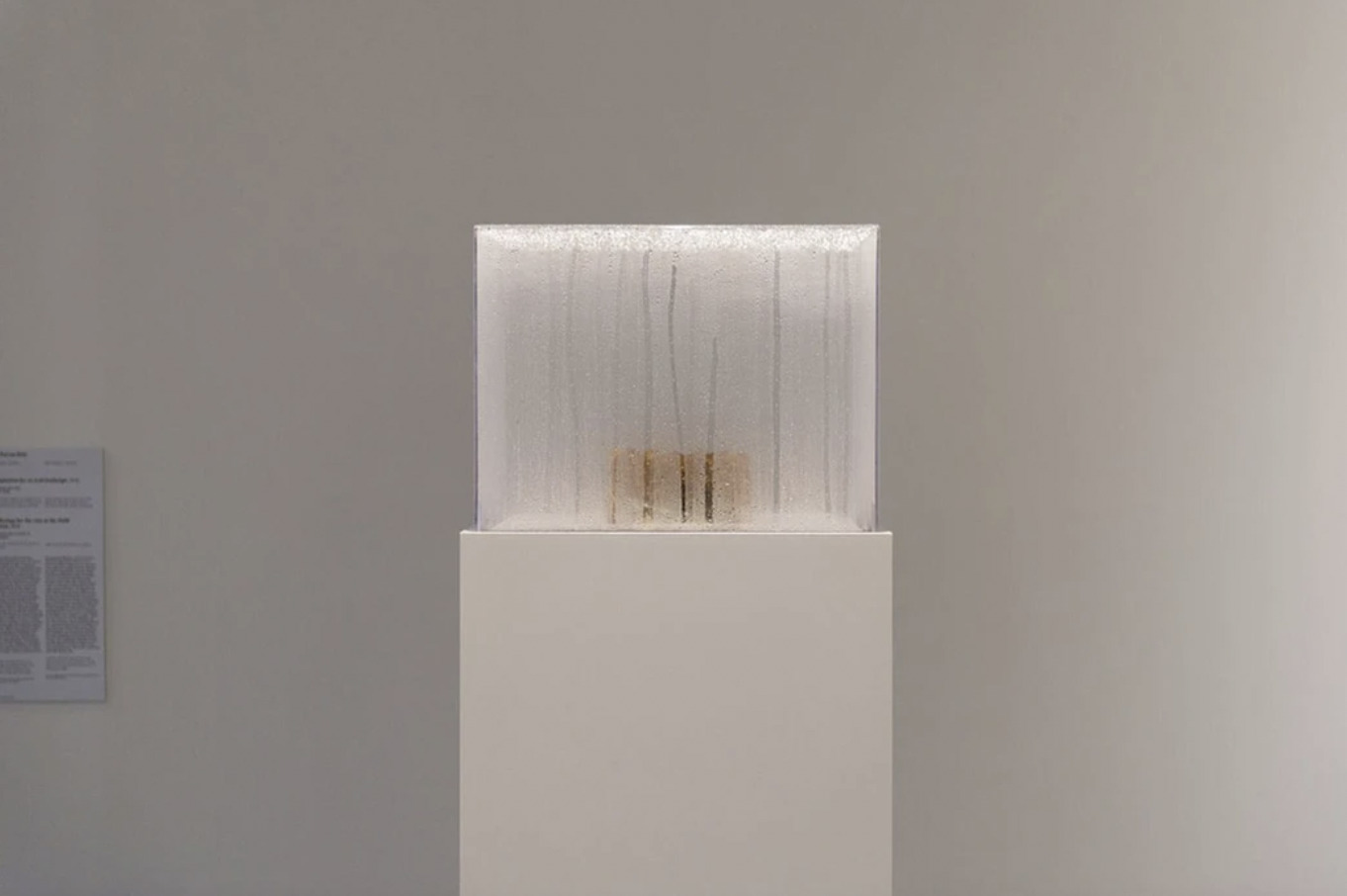 Gala Porras-Kim, Precipitation
for an arid landscape, 2021-ongoing ©Gala Porras-Kim
Gala Porras-Kim, Precipitation
for an arid landscape, 2021-ongoing ©Gala Porras-KimPorras-Kim extends her practice beyond
reviving the inherent meaning of artifacts to restoring their spiritual life
and reawakening their suppressed magical powers and abilities. She creatively
reconstructs the contexts surrounding artifacts that modern scientific
technologies, grounded in Western epistemology, often dismiss as superstition
or primitivism.
For instance, Precipitation for an
arid landscape (2021–ongoing) invokes the sacred history of the
cenote caves at Chichén Itzá, located in Mexico’s Yucatán Peninsula. These
mystical natural formations were regarded by the Maya as portals connecting the
earthly and underworld realms and as sacred sites where the rain god Chaac
resided.
In the early 20th century, artifacts from
these cenotes, totaling approximately 30,000 pieces, including relics and human
remains, were relocated to Harvard University’s Peabody Museum. Separated from
Chaac and removed from their original environment, these artifacts now reside
in a dry setting, devoid of the rainwater that once imbued them with spiritual
significance.
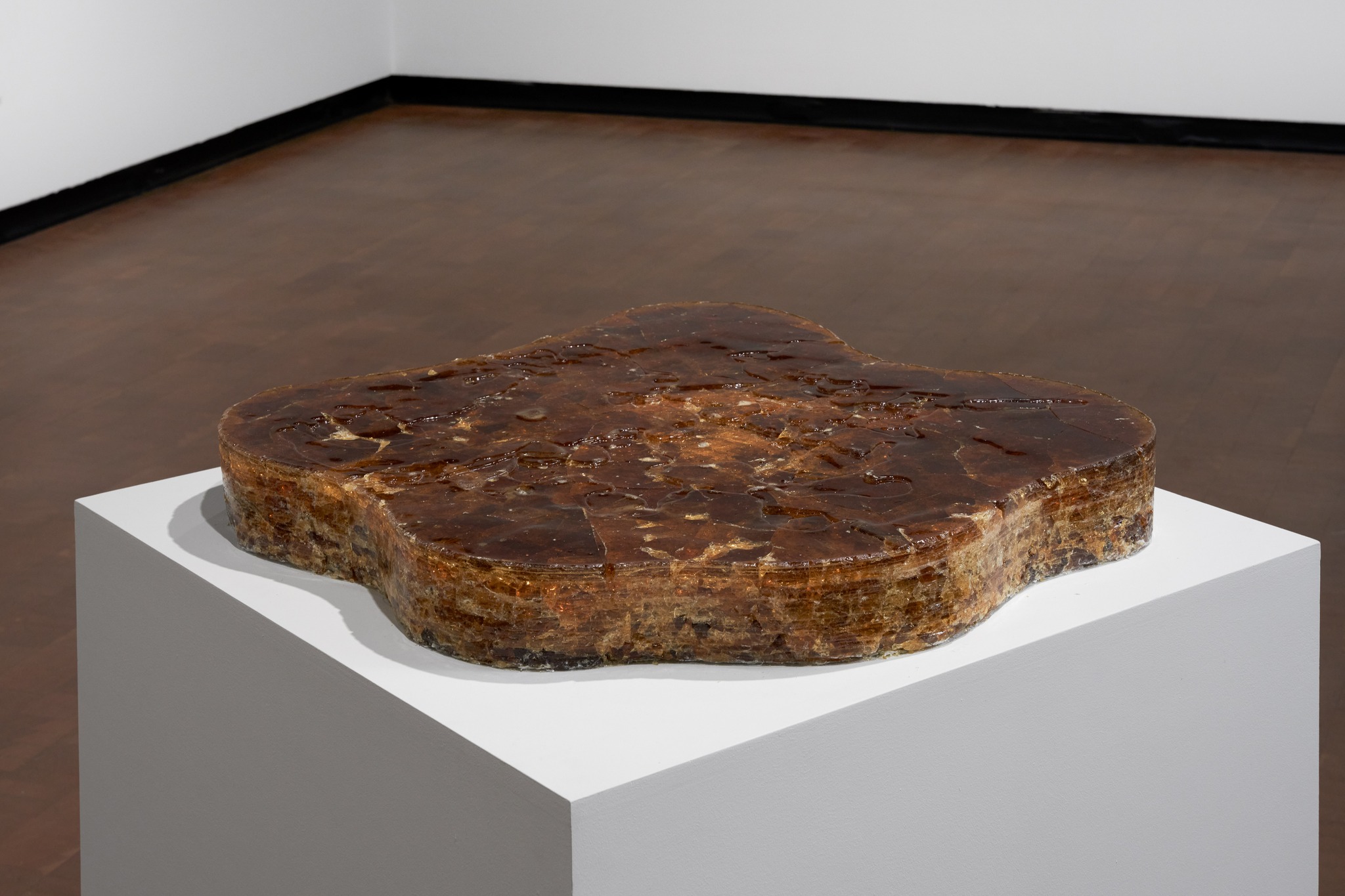 Gala Porras-Kim, Precipitation
for an arid landscape, 2021-ongoing, Installation view at Fowler
Museum ©Fowler Museum. Photo: Elon Schoenholz.
Gala Porras-Kim, Precipitation
for an arid landscape, 2021-ongoing, Installation view at Fowler
Museum ©Fowler Museum. Photo: Elon Schoenholz.Porras-Kim
sent a letter to the director of the Peabody Museum proposing that fragments
detached from the artifacts be reunited with rainwater, replicating their
original environment. To realize this idea, she collected dust from the cenote
artifacts stored in the museum's archives and combined it with resin extracted
from copal trees, a tropical plant native to Central America, to create a new
object.
In
collaboration with exhibition institutions, Porras-Kim orchestrates a daily
ritual where water is sprinkled on the object, symbolically reuniting it with
rainwater. Through this ritual, the object serves as a ceremonial intermediary,
reconnecting the artifacts, human remains, and the Maya civilization’s rain
god, Chaac.
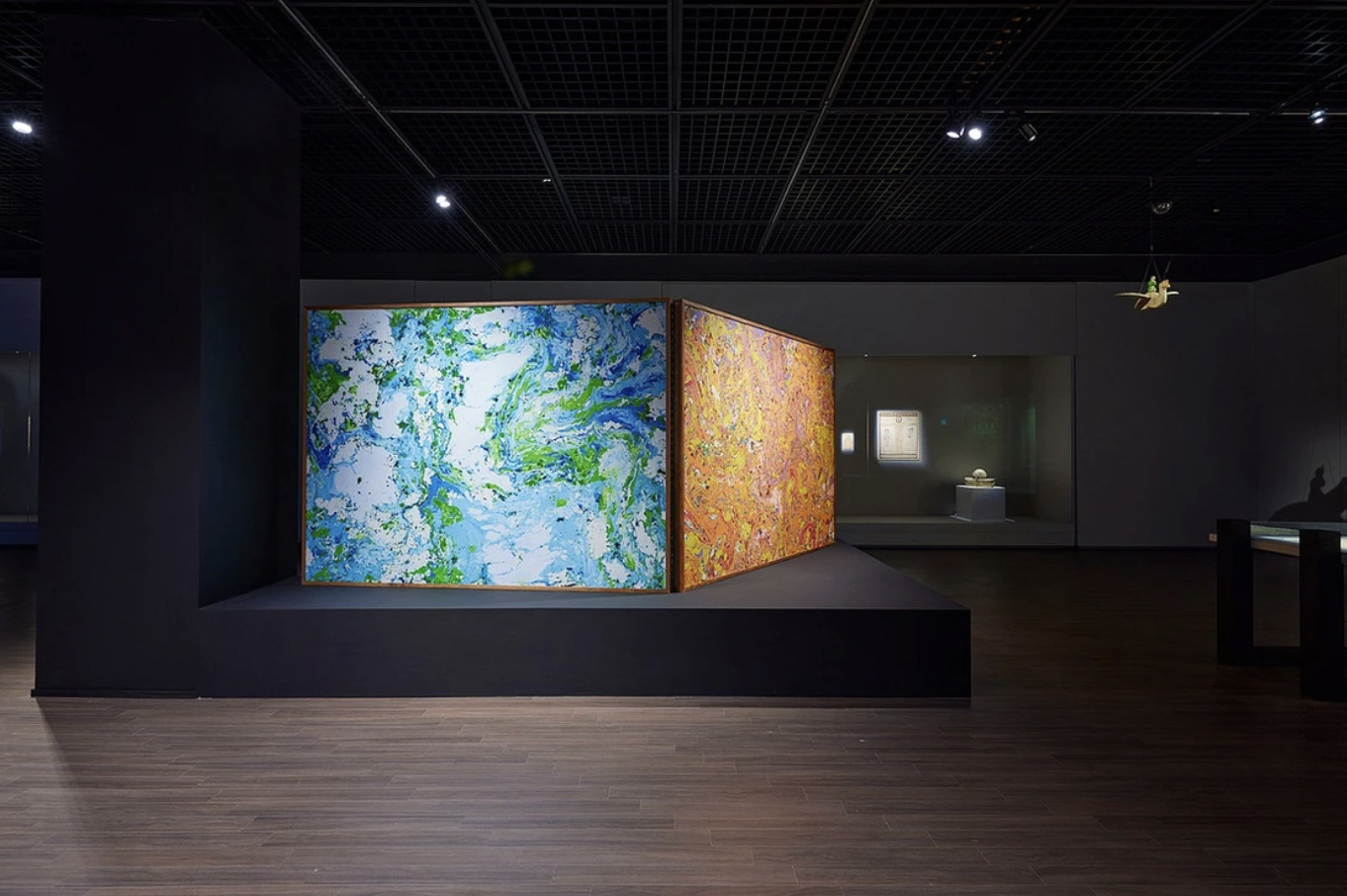 Gala Porras-Kim, A
terminal escape from the place that binds us, 2021 ©Gala Porras-Kim
Gala Porras-Kim, A
terminal escape from the place that binds us, 2021 ©Gala Porras-KimMeanwhile, A terminal escape from
the place that binds us (2020–ongoing), presented at the 13th Gwangju
Biennale, is a painting project aimed at summoning the spirits of remains
displayed in museums. In 2019, Porras-Kim visited Gwangju and reflected on the
institutionalized afterlife imposed upon the human remains exhibited in the
National Museum of Gwangju, a fate they never chose for themselves.
Through the practice of necromancy,
divination with ink stains, Porras-Kim sought to summon these spirits and asked
them to reveal their desired final resting places. Using the marbling
technique, where paint floats on the surface of water, she engaged with the
spirits to manifest images symbolizing the ideal locations where they wish
their remains to rest.
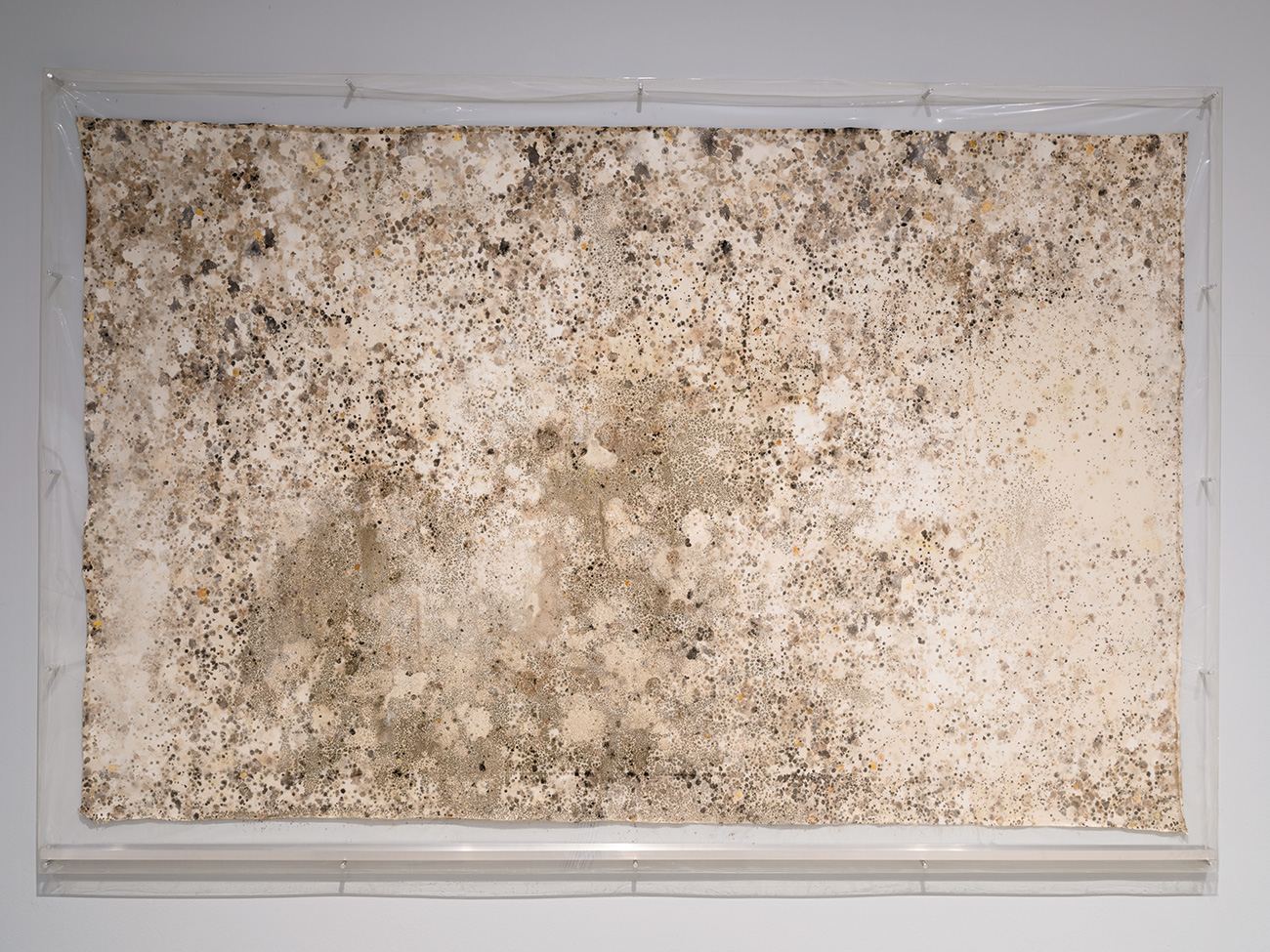 Gala
Porras-Kim, Out of an instance of expiration comes a perennial showing,
2022, Installation view of “Korea Artist Prize 2023” (MMCA, 2023) ©MMCA
Gala
Porras-Kim, Out of an instance of expiration comes a perennial showing,
2022, Installation view of “Korea Artist Prize 2023” (MMCA, 2023) ©MMCAIn
her 2022 work Out of an instance of expiration comes a perennial showing,
Porras-Kim collected mold spores from the British Museum's storage facilities
and cultivated them on muslin cloth soaked in bacterial growth medium, encased
within acrylic display boxes. Over the course of the exhibition, the mold
spores began to proliferate, gradually filling the previously blank fabric and
transforming into a vibrant, living micro-landscape.
Typically,
mold spores are considered indicators of an artifact's preservation status and
are classified as part of the collection, remaining confined within storage. By
collecting and nurturing these spores, Porras-Kim liberated them from the
confines of the repository, allowing them to grow and transform into a new form.
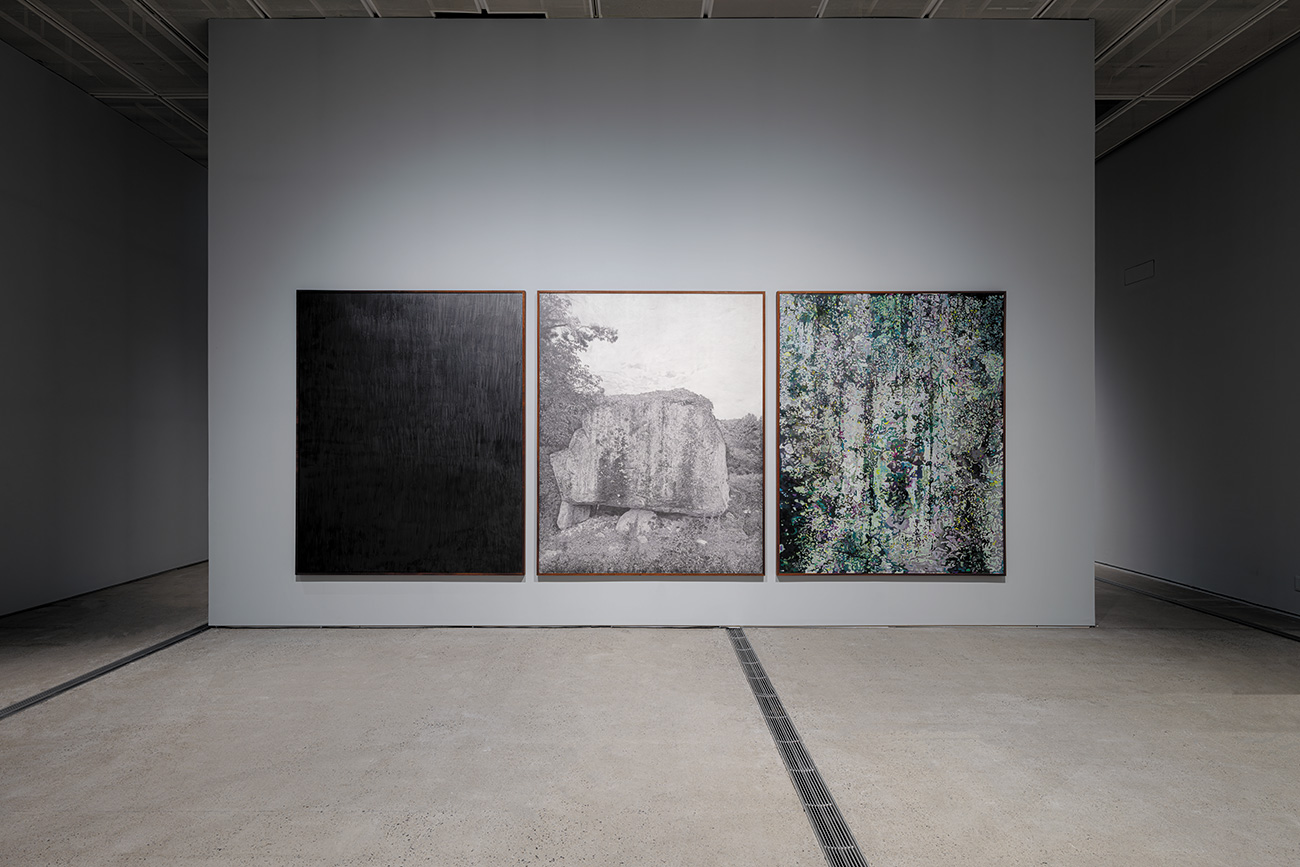 Gala
Porras-Kim, The weight of a patina of time, 2023,
Installation view of “Korea Artist Prize 2023” (MMCA, 2023) ©MMCA
Gala
Porras-Kim, The weight of a patina of time, 2023,
Installation view of “Korea Artist Prize 2023” (MMCA, 2023) ©MMCAFor
the “Korea Artist Prize 2023” exhibition at the National Museum of Modern and
Contemporary Art Korea, Gala Porras-Kim created The weight of a patina
of time, which focuses on the dolmens located in Gochang,
Jeollabuk-do. The dolmens, which functioned as ritual markers for burial sites
during the first millennium BCE, have gradually lost their significance and
function over time, only to be rediscovered and designated as a UNESCO World
Heritage site in the 2000s.
Originally
simple natural stones, the dolmens transformed into burial monuments, became
makeshift drying racks for laundry and chili peppers, and now are protected as
cultural heritage sites. Porras-Kim pays attention to the changing roles of
these structures over time, expressing three perspectives on the dolmens
through three large-scale drawings.
In
one drawing, the black graphite layers depict a landscape from the perspective
of the deceased buried beneath the dolmen. Another drawing, resembling a
photograph, represents the present-day situation where the dolmen is a
designated cultural heritage site. The third abstract drawing imagines the view
from the moss that has existed at the site for thousands of years,
incorporating the perspectives of insects and animals. Displayed side by side,
the three drawings present the dolmen's multifaceted reality, encompassing
various temporal, spatial, and experiential dimensions.
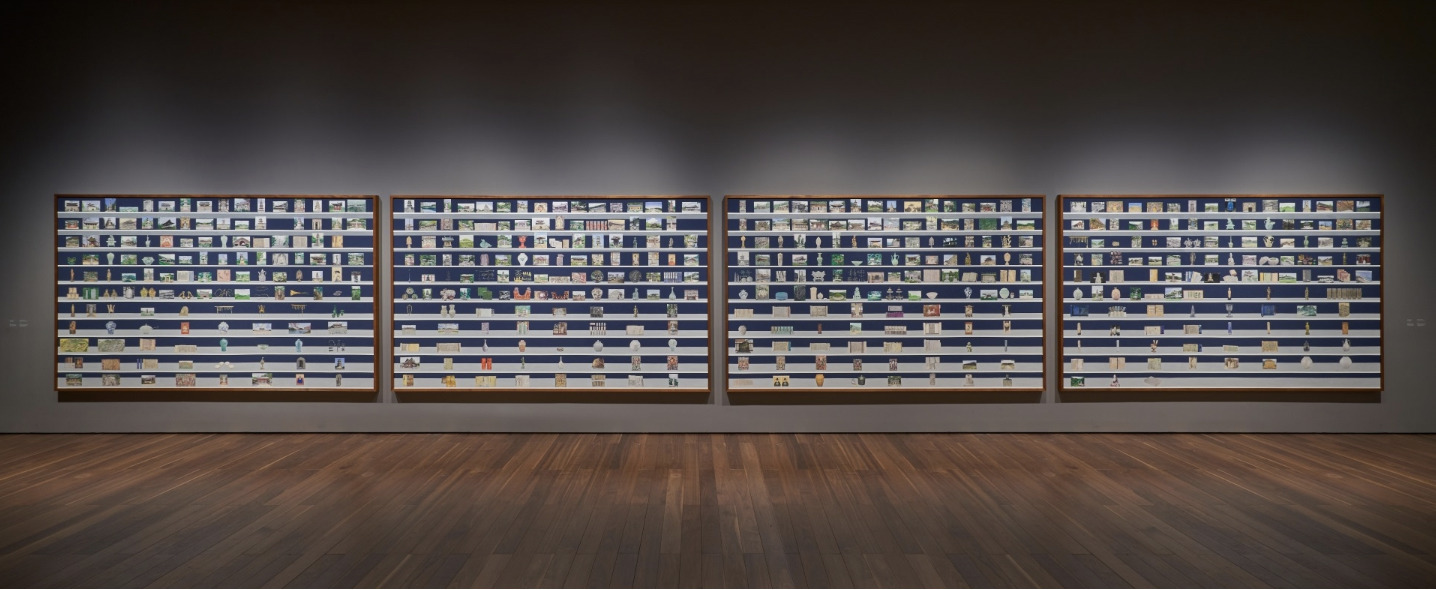 Gala Porras-Kim, 530
National Treasures, 2023, Installation view of “Gala Porras-Kim:
National Treasures” (Leeum Museum of Art, 2023) ©Gala Porras-Kim. Photo: Yang
Ian
Gala Porras-Kim, 530
National Treasures, 2023, Installation view of “Gala Porras-Kim:
National Treasures” (Leeum Museum of Art, 2023) ©Gala Porras-Kim. Photo: Yang
IanIn
2023, Gala Porras-Kim created 530 National Treasures, a
painting that brings together the national treasures of South and North Korea.
The treasures are depicted in alternating order from the top left, according to
their national treasure numbers. The sparse bottom portion of the painting
reflects the fact that North Korea has fewer national treasures compared to
South Korea.
The
origins of these national treasures trace back to a list of treasures
designated by Japan in 1933 during the colonial period. Therefore, most of the
artifacts in the painting were originally unified as cultural heritage under
the name of Joseon before the division of Korea. However, after the liberation
and subsequent division of the peninsula, the list was split, and South and
North Korea each began managing their own cultural heritage.
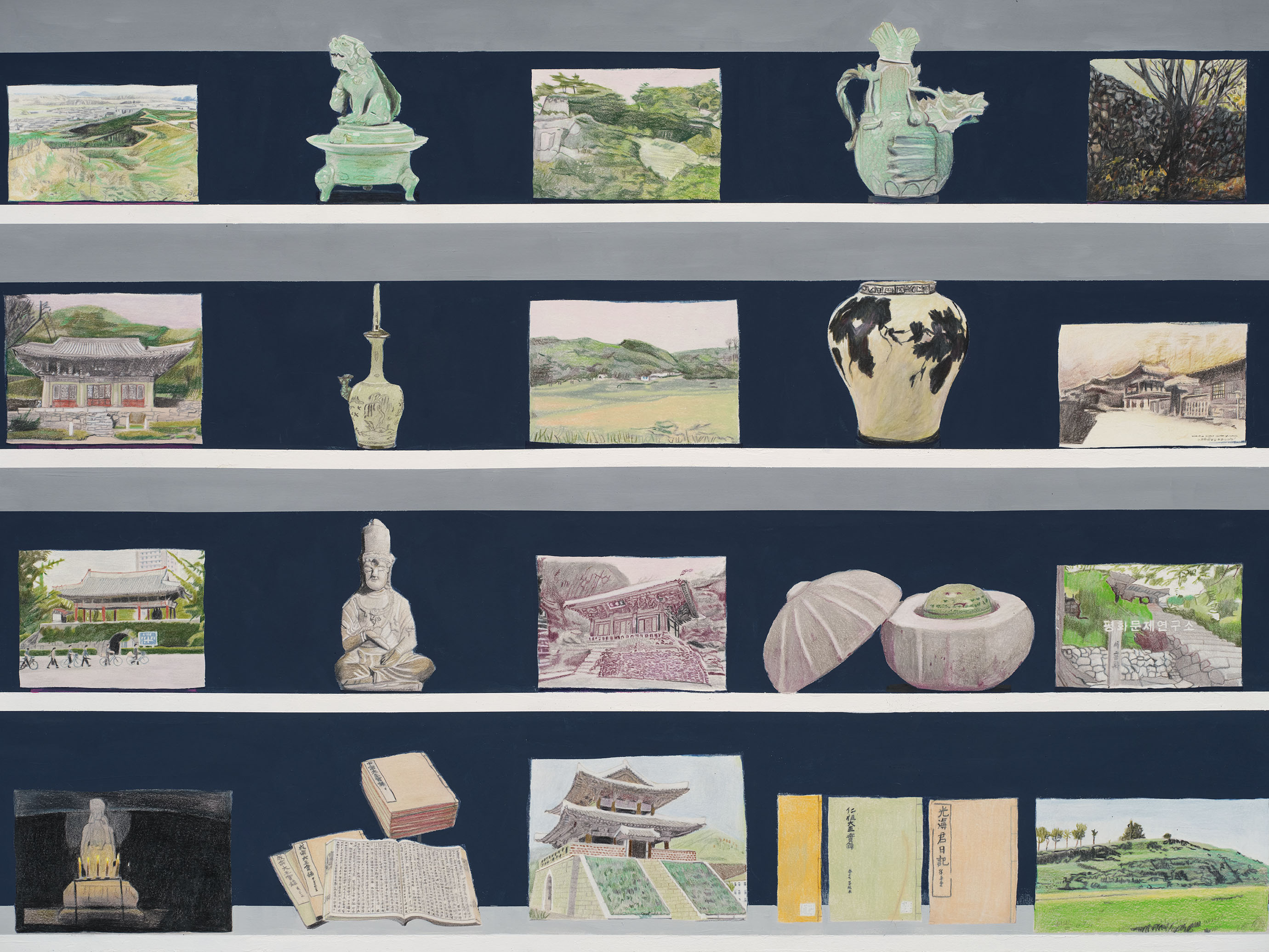 Gala Porras-Kim, 530
National Treasures (detail), 2023 ©Gala Porras-Kim
Gala Porras-Kim, 530
National Treasures (detail), 2023 ©Gala Porras-KimBy
reuniting these divided treasures in her work, the artist highlights how
colonialism and the ideology of division have shaped the management and
separation of cultural heritage. Moreover, Porras-Kim uses the empty space at
the top of the painting to reveal the existence of artifacts that were once
designated as national treasures but later de-designated for various reasons.
This invites the viewer to reflect on the criteria for designating national
treasures and questions what those criteria truly reflect.
In
this way, Gala Porras-Kim strives to reconcile the ancient desires and
traditions embedded in artifacts, which are often stored in vacuum-like
conditions in modern museums and storage rooms, with contemporary institutional
frameworks. The artist actively engages non-human entities such as objects,
human remains, dust, bacteria, and fungi, challenging the anthropocentric
attitudes of Western epistemology and colonial projects. Through this approach,
her work questions existing practices of preservation and institutions,
inviting reflection on the relationship between people and artifacts.
"In
fact, my main interest lies in understanding how the original form of
historical artifacts, which are meant to serve infinite functions, often comes
into conflict with the way they are preserved in their storage environments. I
am questioning, 'Why do methodologies intended to help us understand the past
sometimes contradict the very purpose of the objects themselves?'
I
believe that contemporary interventions, such as the storage of artifacts in
museums, tell us more about people's motivations and the relationship between
people and artifacts than they do about the past itself." (Gala
Porras-Kim, Interview for “Korea Artist Prize 2023”)
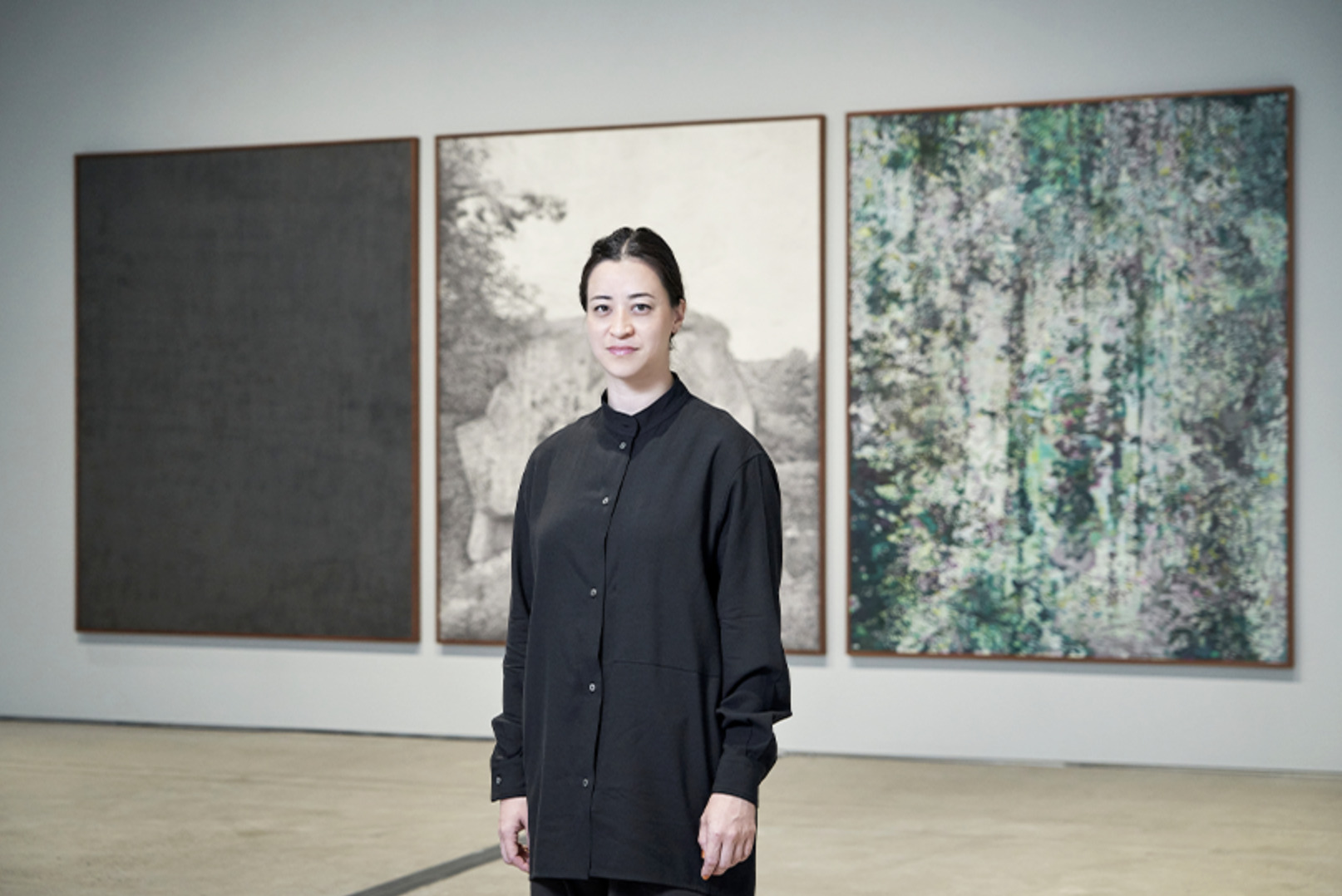 Artist Gala
Porras-Kim ©MMCA
Artist Gala
Porras-Kim ©MMCAGala
Porras-Kim lives and works in Los Angeles and London. She has had solo
exhibitions at MUAC (Mexico City), Kadist (Paris), Amant Foundation (New York,
USA), Gasworks (London), and CAMSTL (St. Louis, USA) and has been included in
the Whitney Biennial and Ural Industrial Biennial (2019), and Gwangju Biennial and
Sao Paulo Biennales (2021) Jeju Biennial and Liverpool Biennial (2022-2023).
She
was a Fellow at the Radcliffe Institute for Advanced Study at Harvard
University (2019) and the artist-in-residence at the Getty Research Institute
(2020-2022), and she is a Senior Critic at Yale sculpture department.
References
- 갈라 포라스-김, Gala Porras-Kim (Artist Website)
- 올해의 작가상 2023, 만물: 갈라 포라스-김의 작업에 대하여 - 시아오유 웡 (Korea Artist Prize 2023, The Ten Thousand Things: on the Practice of Gala Porras-Kim - Xiaoyu Weng)
- 월간미술, 갈라 포라스-김: 다중적 시선 - 임수영
- 제13회 광주비엔날레, 갈라 포라스-김 - 우리를 구속하는 장소로부터의 영원한 도피 (13th Gwangju Biennale, Gala Porras-Kim - A terminal escape from the place that binds us)
- 국립현대미술관, 올해의 작가상 2023 (National Museum of Modern and Contemporary Art Korea (MMCA), Korea Artist Prize 2023)
- 리움미술관, 갈라 포라스-김: 국보 (Leeum Museum of Art, Gala Porras-Kim: National Treasures)
- 국립현대미술관, “올해의 작가상 2023” 인터뷰 2편. 갈라 포라스-김, 전소정 작가




